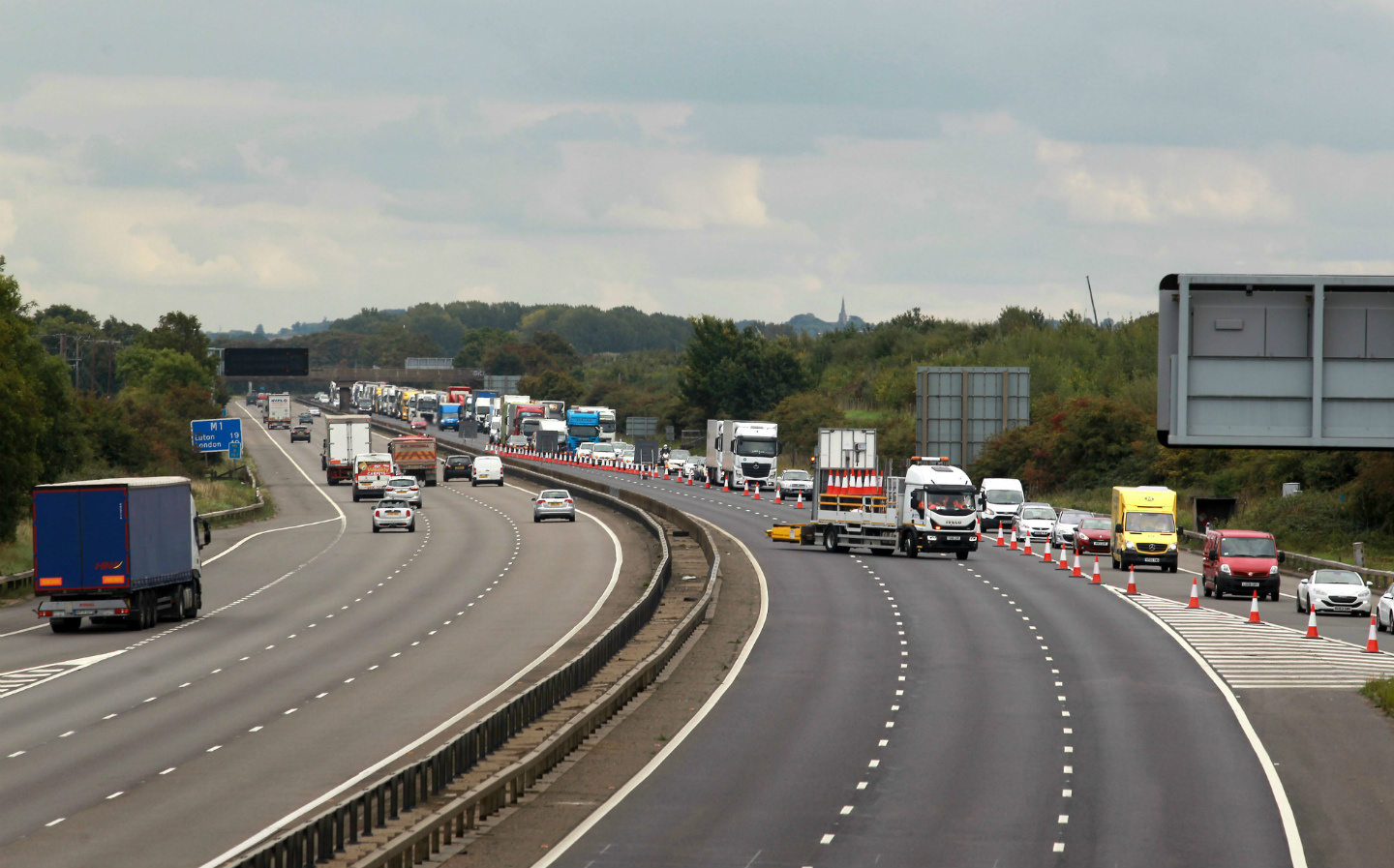Traffic jam cost rises to £9bn a year
Cut motorway closure times, road chiefs told
HIGHWAYS CHIEFS have been ordered to reduce the time taken to reopen motorways after accidents as figures showed that traffic jams cost the economy £9 billion a year.
The government has demanded improvements to the system used to clear carriageways following a spate of road closures that left drivers in tailbacks for up to eight hours.
Jesse Norman, the transport minister, has written to Highways England suggesting that slip roads could be employed as contraflows to clear motorways of vehicles after closures, according to The Times. He also called for more effort to “look after motorists” caught up in delays, often without food and water.
Browse NEW or USED cars for sale
Research published last week discloses that there were more than 1.35 million jams on Britain’s motorways and A roads in the past 12 months, equivalent to almost 3,700 every day. They cost the country £9 billion in wasted time, excess fuel and unnecessary carbon emissions, it was claimed, using assumptions about the number of people typically on the road for work reasons and petrol usage by average vehicles.
The study by the traffic data company Inrix found that the single worst jam over the past year cost almost £2.4 million. The incident on the northbound M5 near Weston- super-Mare, Somerset, on August 4 caused a 36-mile jam at its worst and took 15 hours to clear. It was caused when two lorries collided, spilling diesel on to the carriageway. Highways England had to close two lanes to resurface part of the road. Other big jams over the past year included three on the M6 and one on the A406 North Circular in London. They cost the economy between £900,000 and £1.2 million each, researchers said.
A separate study this year by Inrix found that Britain’s roads, including those in town and city centres, were the most gridlocked in western Europe, with drivers spending an average of 32 hours a year stuck in traffic.
The findings, which rely on real-time data from millions of car GPS systems, have been underlined by the full closure of motorways twice last month over terrorism scares. On September 19 the M1 was shut for up to 14 hours near Northampton when a black plastic bag was found to be leaking yellow liquid, believed to be hydrochloric acid. Some motorists were stuck for eight hours. On September 23 the M3 in Hampshire was closed in both directions for almost 12 hours because of “potentially hazardous material” on the road.
The Inrix study judged a traffic jam to have taken place when the normal speed expected on a particular road fell by more than a third for at least two minutes. Highways England, the taxpayer-funded company that operates motorways and large A roads, defended its record. It said that it had met its target for the past two years to clear 85 per cent of incidents within an hour.
There are concerns, however, that more could have been done to clear traffic after the M1 and M3 incidents. A source at the Office of Rail and Road, the watchdog, said: “We expect Highways England to learn lessons from this and keep improving.”
The Times obtained a letter sent by Mr Norman to the boss of Highways England after the M3 incident. He said he wanted to “ensure that disruption to motorists, businesses and communities is minimised during and after events such as this” and called for better care to be taken of drivers and passengers.
The letter adds: “A particular feature shown in the media was the availability of empty slip roads, and I would be interested to know whether you considered if these could be used as contraflow to move traffic off the motorway,” he said.
Edmund King, president of the AA, said: “We need more creative solutions to the sudden closure of motorways rather than just leaving motorists to stew for hours on end.”
Mel Clarke, customer service director at Highways England, said: “Last year [we] exceeded our target to keep 97 per cent of lanes available to road users, to help smooth the flow of traffic . . . We want drivers to have the best possible experience. To support this we provide accurate, up-to-date information about conditions on the roads and keep traffic moving as much as possible.”
Graeme Paton
This article first appeared in The Times





